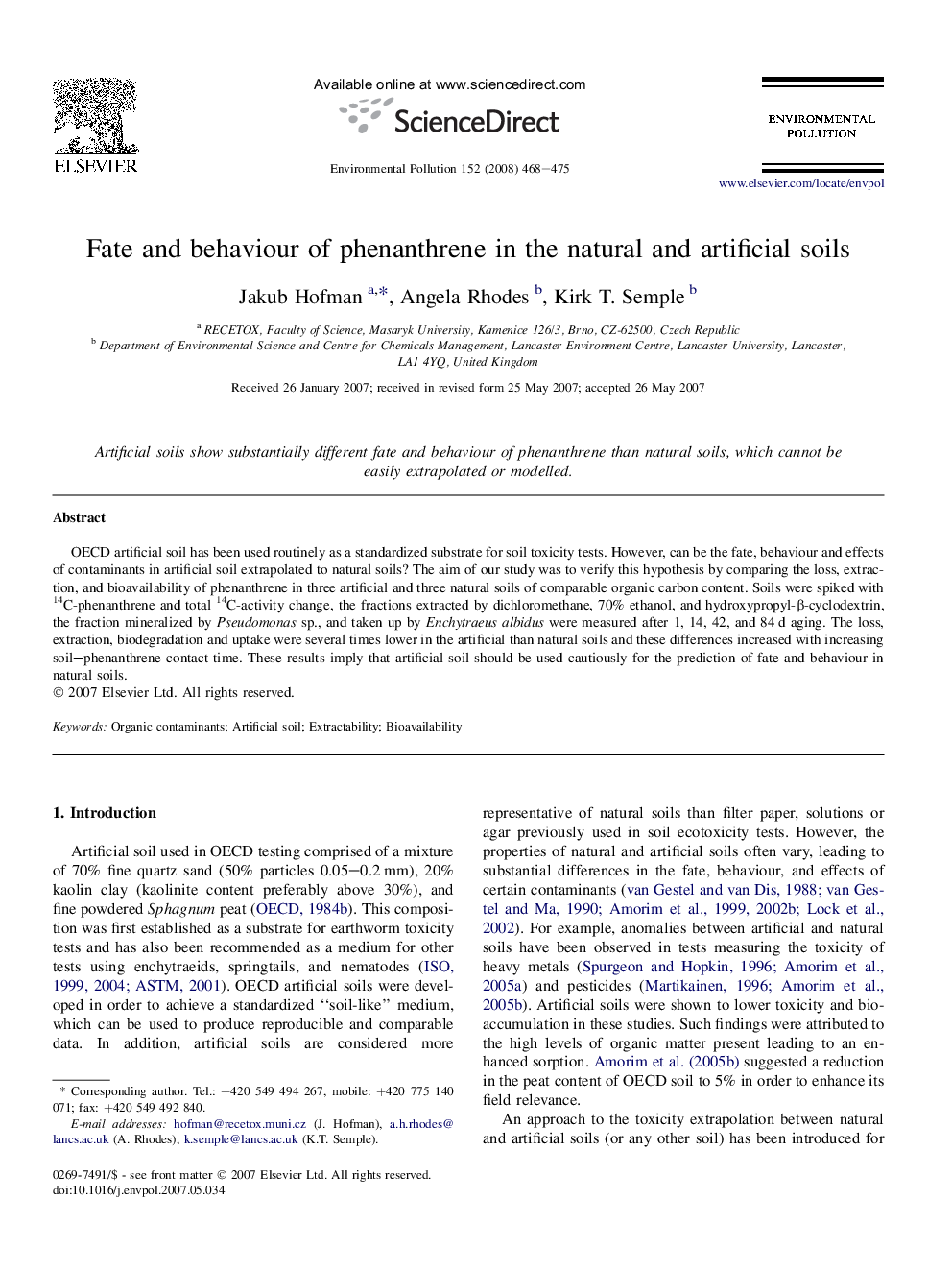| Article ID | Journal | Published Year | Pages | File Type |
|---|---|---|---|---|
| 4427215 | Environmental Pollution | 2008 | 8 Pages |
OECD artificial soil has been used routinely as a standardized substrate for soil toxicity tests. However, can be the fate, behaviour and effects of contaminants in artificial soil extrapolated to natural soils? The aim of our study was to verify this hypothesis by comparing the loss, extraction, and bioavailability of phenanthrene in three artificial and three natural soils of comparable organic carbon content. Soils were spiked with 14C-phenanthrene and total 14C-activity change, the fractions extracted by dichloromethane, 70% ethanol, and hydroxypropyl-β-cyclodextrin, the fraction mineralized by Pseudomonas sp., and taken up by Enchytraeus albidus were measured after 1, 14, 42, and 84 d aging. The loss, extraction, biodegradation and uptake were several times lower in the artificial than natural soils and these differences increased with increasing soil–phenanthrene contact time. These results imply that artificial soil should be used cautiously for the prediction of fate and behaviour in natural soils.
